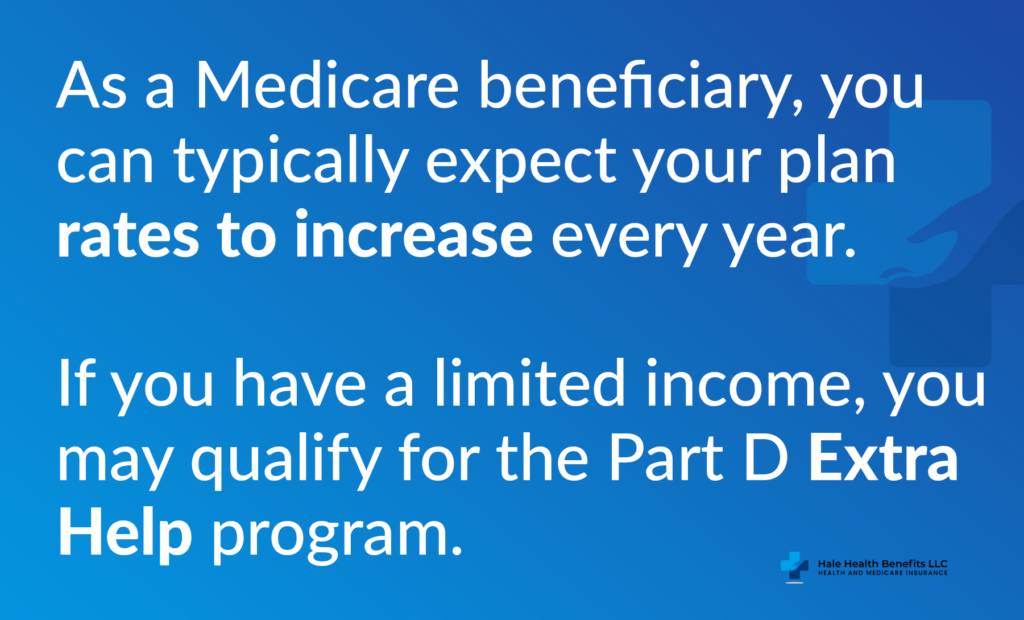Medicare Costs
Before choosing a Medicare insurance plan, it helps to know what you can expect to pay before your coverage kicks in. We’ve provided an overview for what the different parts of Medicare may cost and what you should know. If you’re concerned about paying for care, whether now or in the future, you’re not alone. Many people qualify for Medicare Savings Programs and/or Medicaid without even knowing it!
You’ll hear these terms used over and over in the insurance world. Knowing what these mean is the first step to understanding Medicare costs.
Deductible: This is an amount you must spend for health care or prescriptions — within a certain period — before Original Medicare, your Part D plan, or other insurance begins to fund your treatments or meds.
Coinsurance: This is a percentage of a treatment cost that you’ll need to self-fund. For Medicare Part B, it comes to 20%.
Copayment: This is a fixed dollar amount you pay when receiving certain treatments. For Medicare, it typically applies to prescription drugs.
Excess charge: If you have Original Medicare, this is the difference when the amount a provider is legally permitted to charge is more than the Medicare-approved amount. Medigap Plans F and G cover 100% of excess charges under Part B.
Premium: This is the repeated amount (usually monthly) you pay to keep your coverage active. The premium may go to Medicare, an insurance company, or a health care plan for medical services or prescription drug coverage. Premiums can vary widely depending on the plan and company you choose.
Most people qualify for premium-free Part A, which is hospitalization coverage.
There’s a $1,484 deductible for each benefit period of 60 days or less. So if you’re in and out of the hospital multiple times in the same year, you’ll need to pay Part A deductibles. Other costs include
- Days 1-60: $0 coinsurance
- Days 61-90: $371 coinsurance per day
- Days 91+ $742 coinsurance per day — up to 60 days over your lifetime.
Beyond lifetime reserve days, you’ll pay all costs on your own.
Part B, your medical coverage, isn’t free. You’ll pay a monthly premium that includes coverage for an array of healthcare costs. Higher earners will pay more.
Then there’s the Part B coinsurance — $203 per year — and you’ll pay 20% of Medicare-approved expenses.
However, you can purchase Medicare Supplement Insurance to lower or potentially eliminate all your out-of-pocket costs associated with traditional Medicare.
Medicare Advantage (Part C) plans cover the same services as Medicare Parts A and B combined, and will often include a prescription drug plan at no additional cost — along with extra benefits like dental, vision, hearing aids, and gym memberships.
These plans provide a cap on your maximum out-of-pocket costs, but you may face higher costs if you see a doctor who is out of network. You’ll continue paying your Medicare Part B premium while enrolled in a Medicare Advantage plan. The copays and max out of pocket are different from one plan to another.
- $0 premium Medicare Advantage plans are available in most areas.
- Zero copays of Generic Drugs
- Senior Insulin Savings Programs
Medicare Part D, known as prescription drug coverage, is offered through private insurance companies that contract with Medicare. For a monthly premium, you’ll get access to the medication you may need. Each plan has its own list of covered drugs (formulary), and the cost-sharing varies by plan.
If you or somebody you know has limited income, we can help you enroll in Extra Help. The income limit for this program is much higher than it is for Medicaid!

Enrolling in the right Medicare drug plan can save you hundreds, even thousands of dollars per year on your prescription costs. When it’s time to review your plan (every fall), reach out to your insurance broker.
Medicare Supplements, aka “Medigap” plans, are health insurance policies that offer standardized benefits to work with Parts A and B. If you choose to buy a plan, you’ll pay a premium that varies based on age, zip code, plan letter, and insurance company.
When you have a health issue, your Original Medicare benefits pay their 80% share before the Medigap benefits enter and cover the rest. Medigap plans are priced in one of three ways:
- Issue-Age Rating: will not go up as you age.
- Attained-Age Rating: goes up as you age.
- Community Rating: Everyone in the ‘community’ pays the same amount.

Ask a Medicare Specialist for the truth about receiving money ($148.50) back into your Social Security Check.
At Hale Health Benefits, we help our clients in Idaho find the Medicare plans that best fit their needs and budget. Contact us today to see how we can help you save money on your healthcare and prescription costs!
